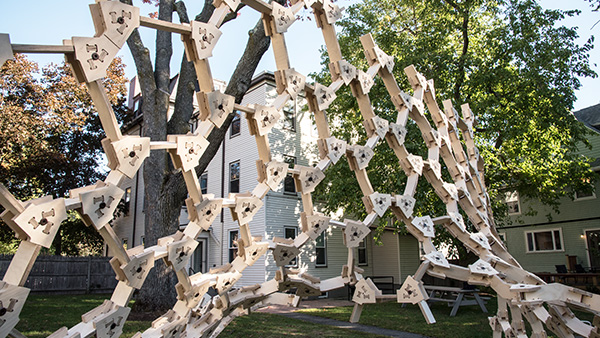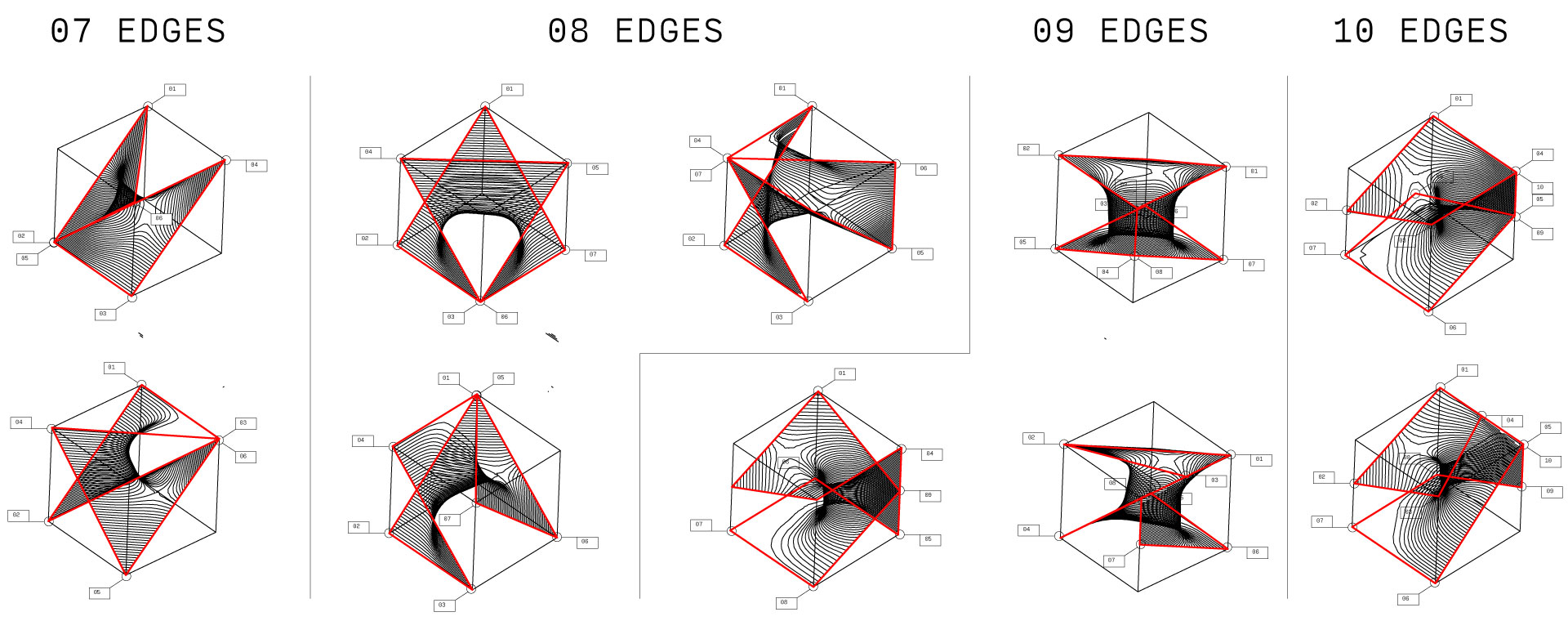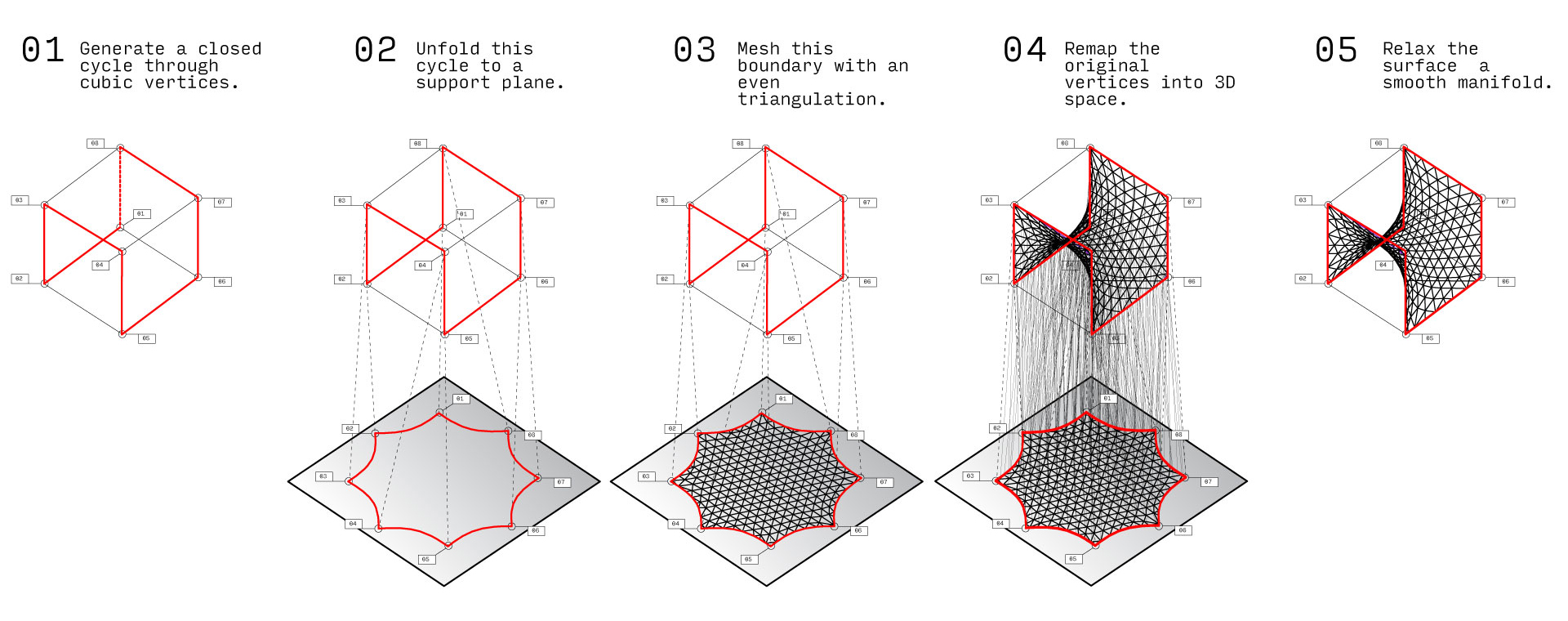
EDGE CASES
Year: 2014
Client: Certain Measures
Team: Tobias Nolte, Andrew Witt, Mike Degen, Jason Tucker, Akshay Goyal, Aziz Barbar, Claire Djang, Zach Seibold, Peter Sprowls
Partner: Harvard Geometry Lab
Client: Certain Measures
Team: Tobias Nolte, Andrew Witt, Mike Degen, Jason Tucker, Akshay Goyal, Aziz Barbar, Claire Djang, Zach Seibold, Peter Sprowls
Partner: Harvard Geometry Lab
Our Trihex method is a method of constructing spanning surfaces from an initial closed boundary to a tectonically articulated surface.
The Trihex is an entirely flat-packable node system and relies on custom software tools to ensure the structural modules are as uniform as possible while allowing maximum geometric freedom. The structural system itself is an alternating packing of both hexagons and triangles. The hexagons provide formal flexibility while the triangles provide rigidity. To calibrate the stiffness of the frame, the area proportion of triangles relative to the hexagons may be enlarged or reduced. The inital creation of this particular kind of frame requires a specific kind of even-parity mesh, which we developed cartographic tools to determine.
We constructed a small part of such a structure – a half-flip of a rectangular frame, self-supporting and freestanding. Each piece was cut without miters or oblique intersections – every node intersects every bar at 90 degrees. This ensures that cladding is not supported only at points but instead along the entire length of a bar or full face of a node. The subdivision itself is designed to support developable cladding.. The bolted connections create rigid moment frames, but the entire structure is quite light and easily portable.




Flattened frame diagrams showing heatmap of relative distortion (right) and cartography of trihex frame structure (left)

Spanning surfaces generated from single boundary curves.

Process diagram explaining how to create an even triangulation along a smooth manifold surface